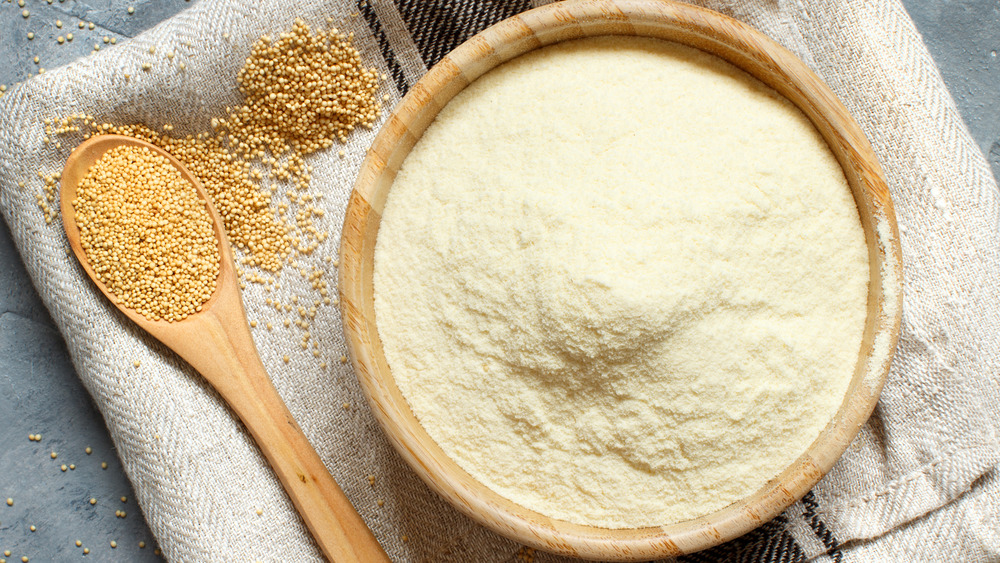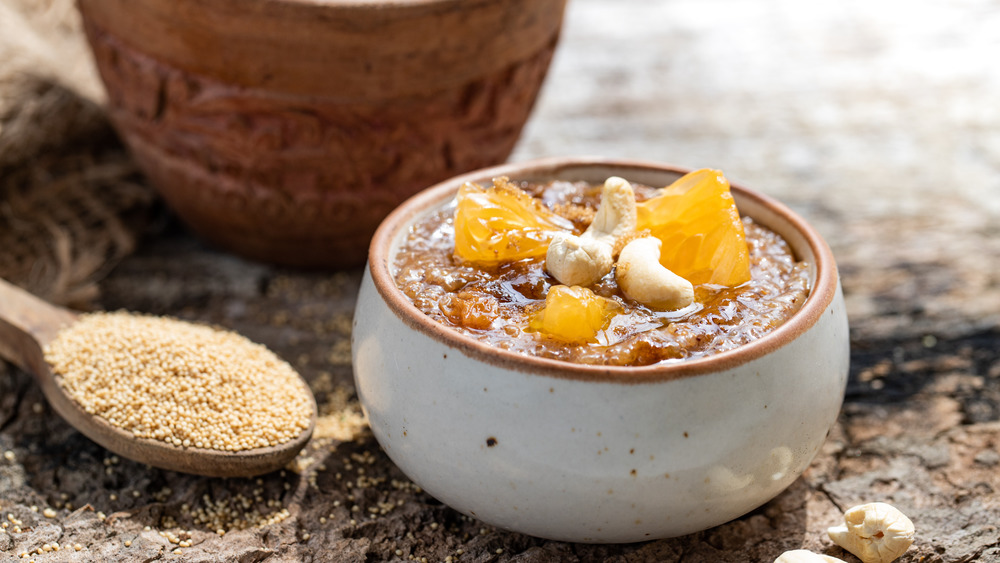What Is Amaranth And What Does It Taste Like?
Have you ever wondered what amaranth is or how it tastes? We do not mean the cocktail, although, it does sound intriguing, and amaranth can definitely be used in beverages. According to Heart Beet Farms, amaranth is comprised of more than 60 different grain species and has health trend lovers wagging their tongues over its potential benefits. It's considered a pseudocereal because, while it has nutrients like a cereal grain, it is different from oats or wheat in that amaranth is actually a seed. Still, we tend to refer to it as a grain.
Per Ancient Grains, amaranth's origins can be traced to the Aztecs who grew it somewhere between 6,000 and 8,000 years ago. Surprisingly, it did not get much attention in the United States until the 1970s. But amaranth is definitely starting to feel the spotlight. The Food Network notes that just a single cup of this grain contains 251 calories, 4 grams of fat, and 46 grams of carbohydrates. It also gets to wear the crown for containing the greatest amount of protein of all grains (9 grams per cup). And you can check the box on fiber, iron, and a whole host of minerals and vitamins when you eat amaranth. But how is it used and what does it taste like?
Amaranth has a nutty flavor
Amaranth seeds are similar in size to sesame seeds and can be used whole or ground into flour. Food Network suggests using the gluten-free flour to make your pancakes and muffins while sharing that in its whole form, amaranth can be used in soups, chili, or even as a substitute for rice. It is pretty versatile if you ask us. Healthline notes that you can also add it to smoothies and cook it as a cereal. Additionally, they offer this expert tip that you may want to sprout your amaranth before you prepare it. This will potentially aid in digesting it.
But let's get to the real question that truly tips the scale as to whether or not we want to partake of this health food: what does amaranth taste like? Mild, sweet, and nutty seems to be the consensus. Additionally, it's a little crunchy once it has been cooked. Women's Health shares that when you start cooking amaranth, "the seeds release an intense grassy aroma" and if you really want to enjoy amaranth in a way that is different from the likes of quinoa and couscous, you should try popping it like popcorn.

